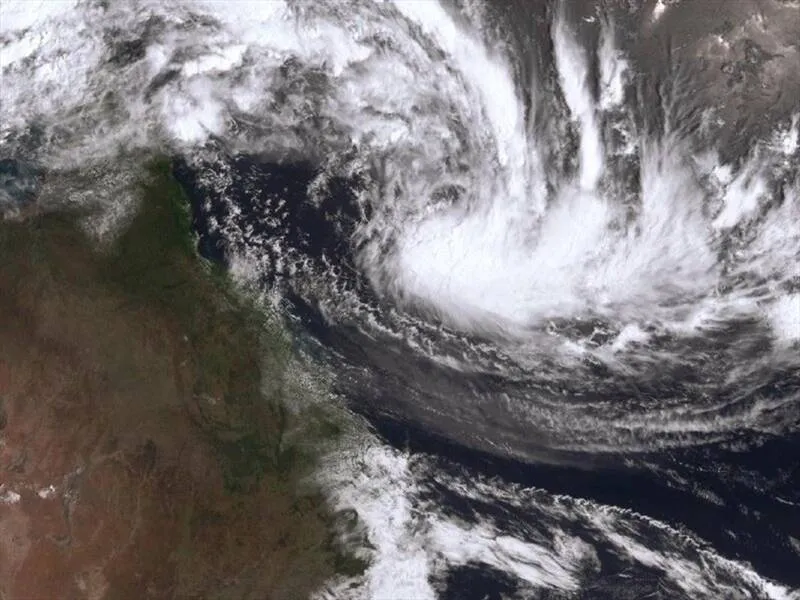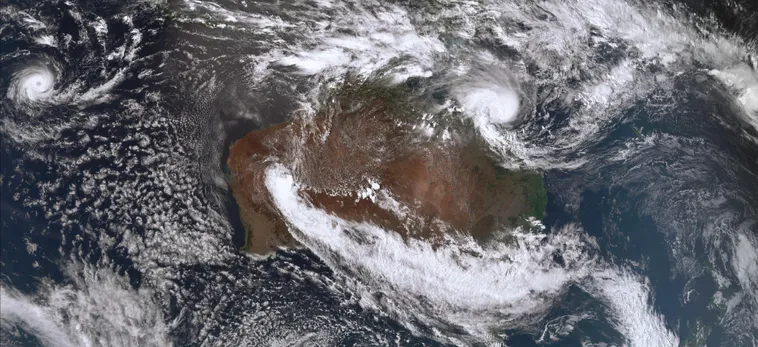As Queensland prepares for the impending arrival of Tropical Cyclone Kirrily, experts are attributing the storm’s formation to unusually high temperatures in the Coral Sea. Kirrily is expected to intensify into a category-two system, bringing with it damaging winds and heavy rainfall to parts of central and western Queensland.
The storm’s origins date back to early last week, when a low-pressure system formed over the Gulf of Carpentaria. Warmer-than-usual sea surface temperatures in the Coral Sea have contributed to the system’s intensification, drawing in more moisture and energy. These temperatures are well above average for this time of year, with some areas measuring between 2C and 3C above average.
The Bureau of Meteorology has warned that Kirrily will bring severe weather to a region between Ayr and Mackay, with heavy rainfall and strong winds expected in the days ahead. While there is still some uncertainty surrounding the storm’s exact path, forecasters are predicting a category-two system, with maximum winds of between 89 and 117km/h and gusts of up to 164km/h.
Cyclone Kirrily is just the second major storm to affect Queensland this summer, following Tropical Cyclone Jasper, which brought devastating floods to far north Queensland in mid-December. The back-to-back cyclones have raised questions about the broader trends for cyclones under global heating.
Experts say that cyclones are dependent on sea surface temperatures and tend not to form when ocean temperatures are below about 26.5C. Temperatures in the ocean have been rising for decades due to global heating, with the global average sea surface temperatures reaching record levels since March 2023.

As the planet warms, climate scientists expect to see fewer cyclones forming, but those that do form will likely be more intense. Rising sea levels will also worsen the impacts from tropical cyclones, including increased inundation from storm surges and intensified rainfall.
Despite the challenges posed by climate change, researchers believe that artificial intelligence can be harnessed to improve weather prediction. By analyzing vast amounts of data and identifying patterns, AI algorithms can better forecast the behavior of complex weather systems like cyclones.
As Queenslanders prepare for the arrival of Cyclone Kirrily, experts are emphasizing the importance of accurate forecasting and the need to adapt to the changing climate. By understanding the underlying trends and patterns driving the formation of cyclones, scientists hope to improve their ability to predict these powerful storms and mitigate their impacts on communities.

